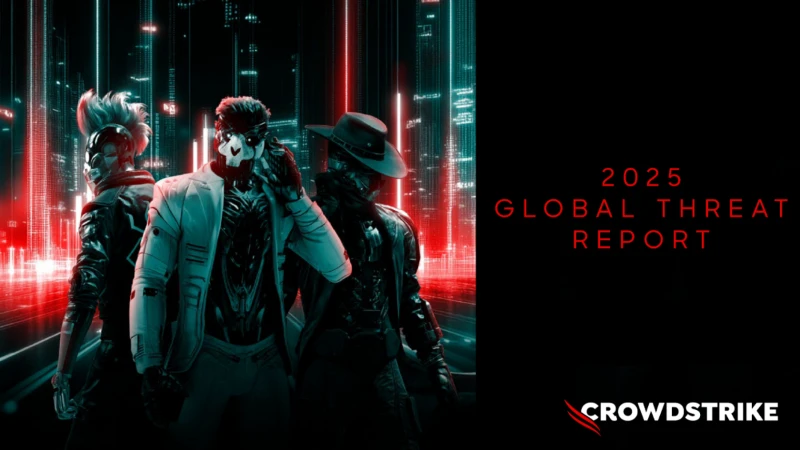2025 Threat Landscape: What You Don’t See Might Hurt You Most
Published on 12 Jun 2025

Cybersecurity has entered a new era—one defined by speed, stealth, and enterprising adversaries that behave more like agile startups than underground operatives. As defenses evolve, so too do the tactics of attackers, creating a fast-moving landscape where milliseconds matter and traditional assumptions no longer apply.
CrowdStrike’s 2025 Global Threat Report reveals how adversaries adapted in 2024, leveraging AI, insider access, and identity compromise to scale sophisticated campaigns globally. This isn't just a shift—it's a structural transformation in how modern cyberattacks are conceived and executed.
The Rise of the Enterprising Adversary
In 2024, threat actors moved faster and smarter. The average time for attackers to move laterally across a network—known as breakout time—dropped to a record low of just 48 minutes, with the fastest intrusion unfolding in under a minute. These aren’t brute-force hacks; they’re well-coordinated business-like operations targeting weak links in identity and cloud infrastructure.
Rather than relying on malware, 79% of intrusions observed were malware-free, relying instead on social engineering, valid credentials, and remote monitoring tools. The human layer is now the front line—and it’s under siege.
Social Engineering at Scale
The report outlines a staggering 442% surge in voice phishing (vishing) between the first and second halves of 2024. Attackers posing as IT support staff use spam campaigns and tools like Microsoft Quick Assist to gain access. Groups like CURLY SPIDER and CHATTY SPIDER executed entire ransomware deployment chains via simple voice calls and well-timed deception.
Adversaries are also infiltrating help desks, tricking staff into resetting multi-factor authentication or employee passwords. Publicly available personal data is weaponized to bypass common verification checks.
When AI Becomes the Attacker’s Ally
Generative AI has changed the game for cybercriminals. In one case, deepfake voice and video clones convinced a company to transfer $25.6 million to a fraudster. In others, adversaries used LLM-generated phishing emails that achieved click-through rates four times higher than human-written ones.
Groups such as FAMOUS CHOLLIMA deployed AI-generated fake job applicants to embed malicious insiders within victim organizations. Their high operational tempo highlights a troubling new normal: AI-enhanced deception is no longer theoretical—it’s active and expanding.
What’s Next? Cloud, Credentials & Covert Operations
Threat actors are increasingly exploiting cloud infrastructure, using valid credentials and unpatched vulnerabilities to quietly embed themselves in enterprise environments. 35% of cloud incidents in 2024 stemmed from valid account abuse, and new techniques like “LLMJacking” are emerging to hijack access to commercial AI platforms.
Meanwhile, China-nexus adversaries expanded their global reach with a 150% increase in activity, targeting strategic industries with highly specialized tooling and techniques. These intrusions now reflect a maturing cyber ecosystem fueled by decades of investment and a clear geopolitical agenda.
Don’t Wait for the Breach
The threat landscape is accelerating. Adversaries are innovating, collaborating, and automating. Defensive strategies must do the same. Whether it’s advanced persistent threats, AI-driven phishing, or insider attacks masked as legitimate activity, staying informed is your first line of defense.
Download the full CrowdStrike 2025 Global Threat Report now to explore:
-
Detailed case studies from top adversaries
-
Cloud-specific intrusion tactics
-
GenAI’s growing impact on cybersecurity
-
Proactive defense strategies for your organization
Download now to learn more and secure your advantage against tomorrow’s threats.
